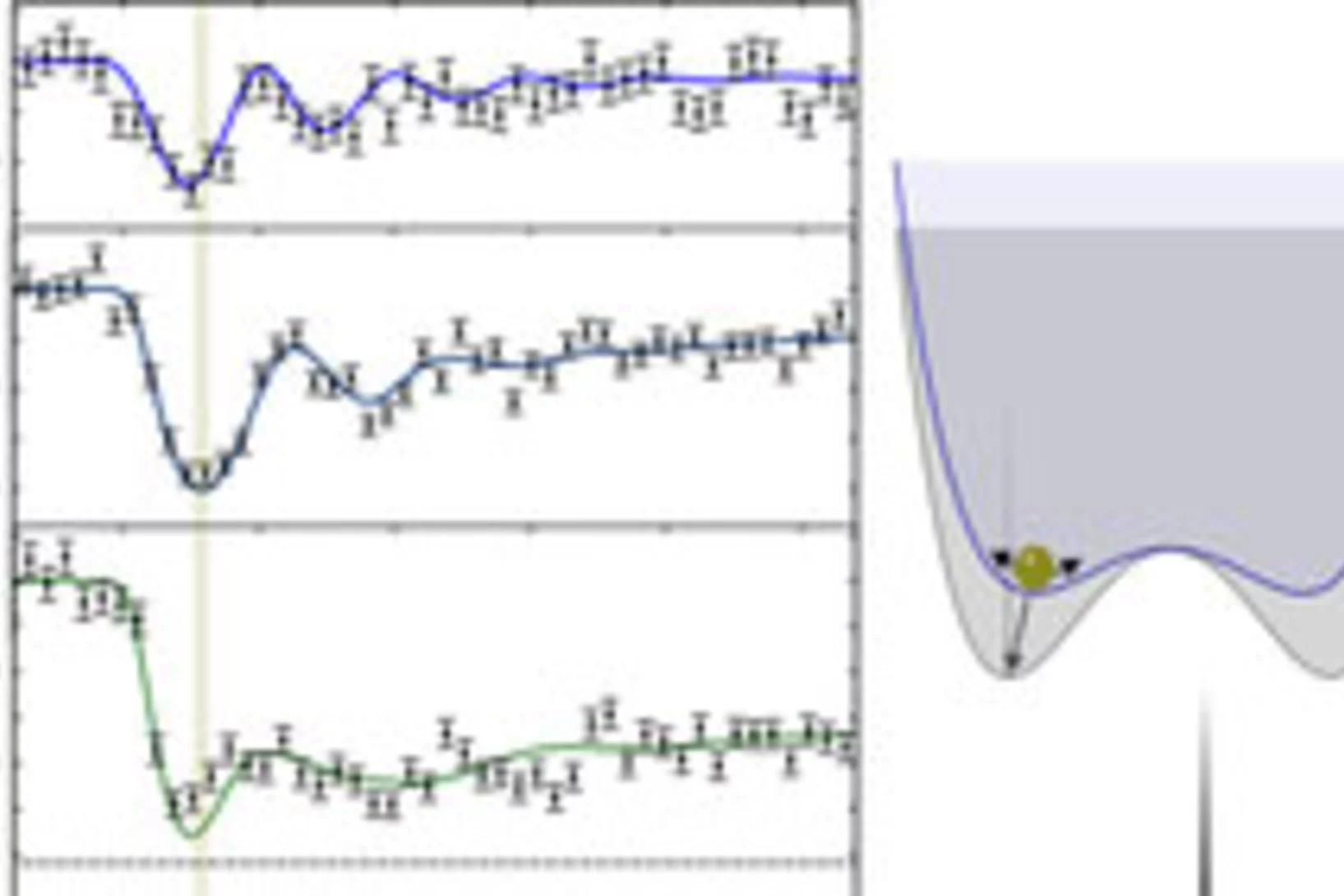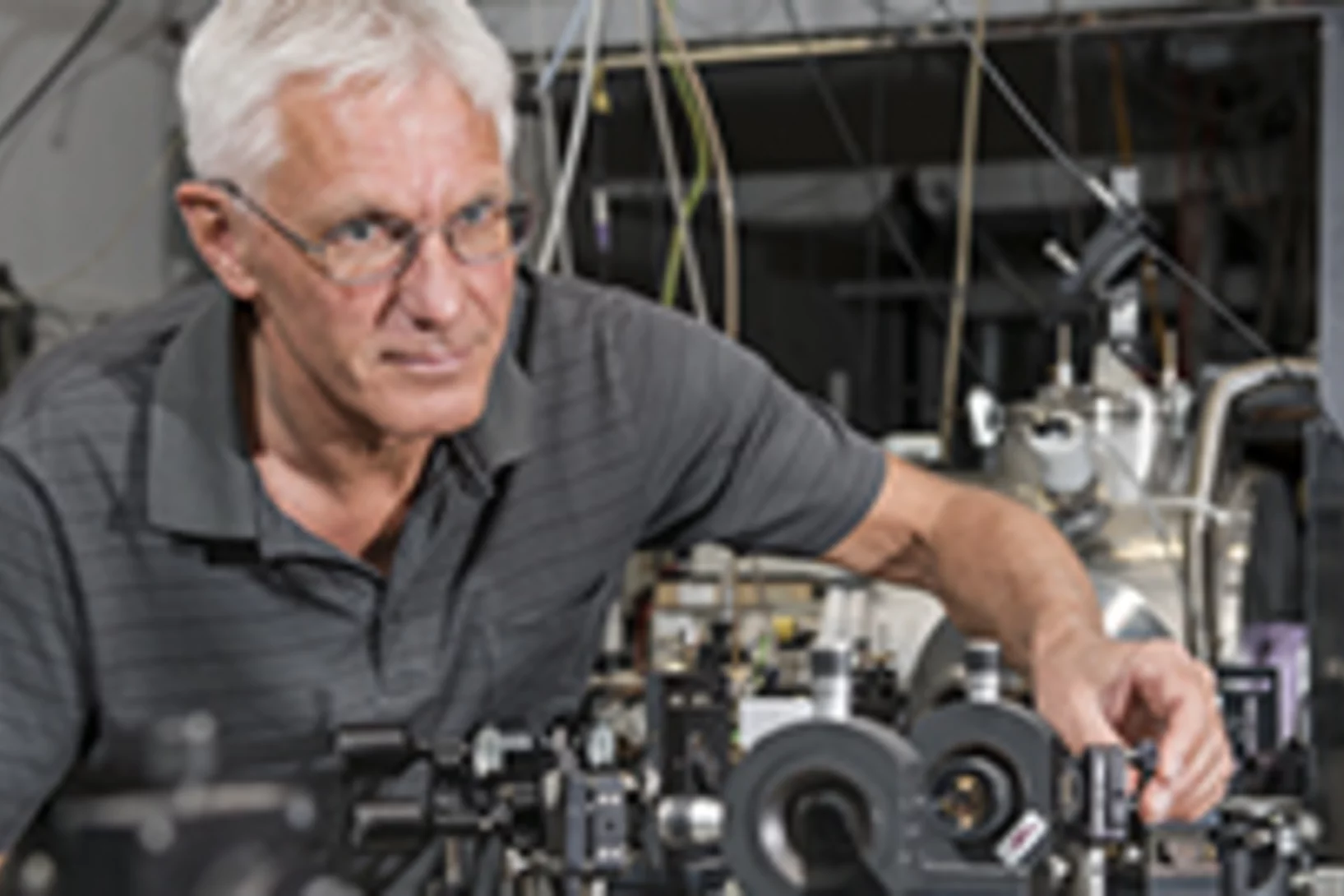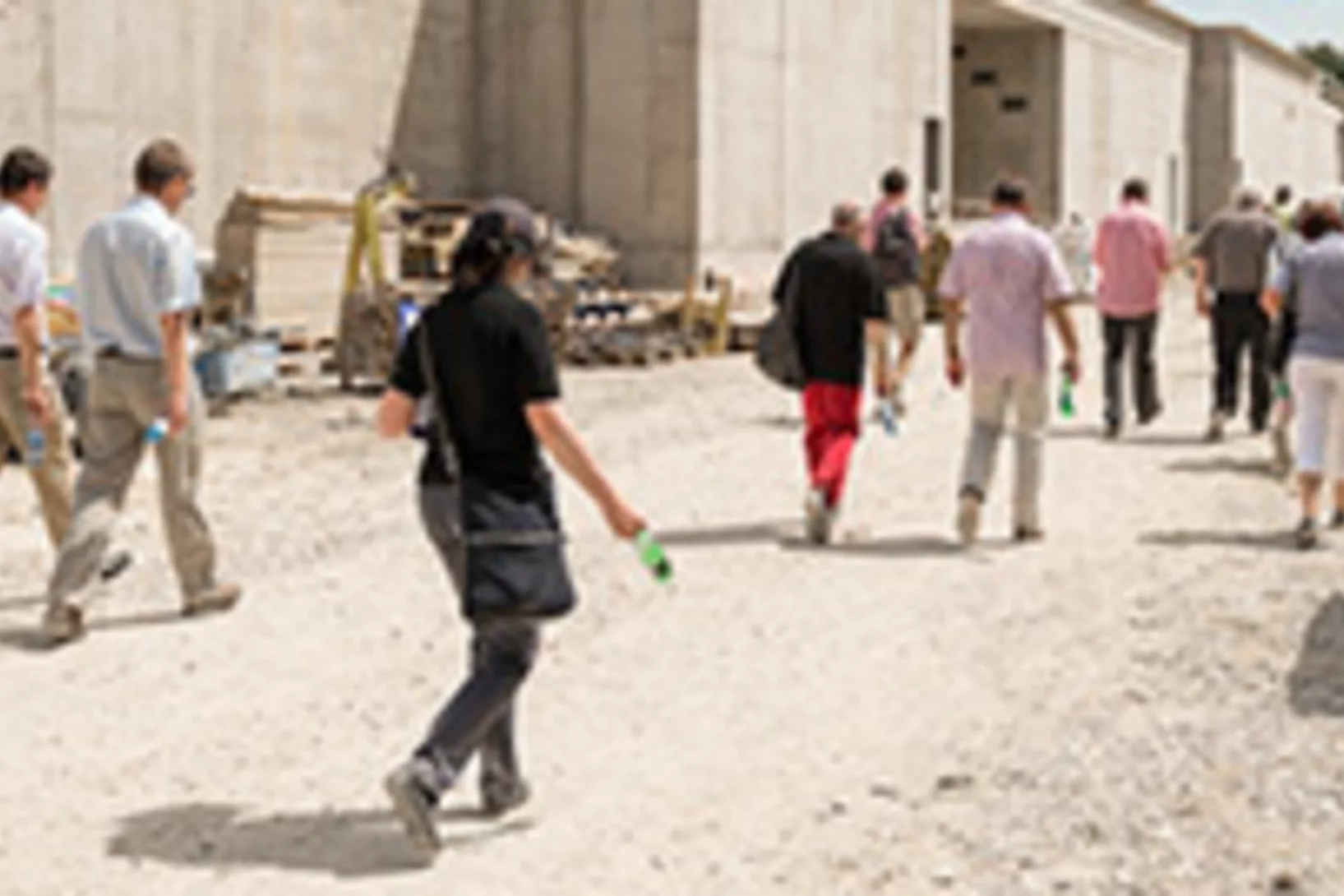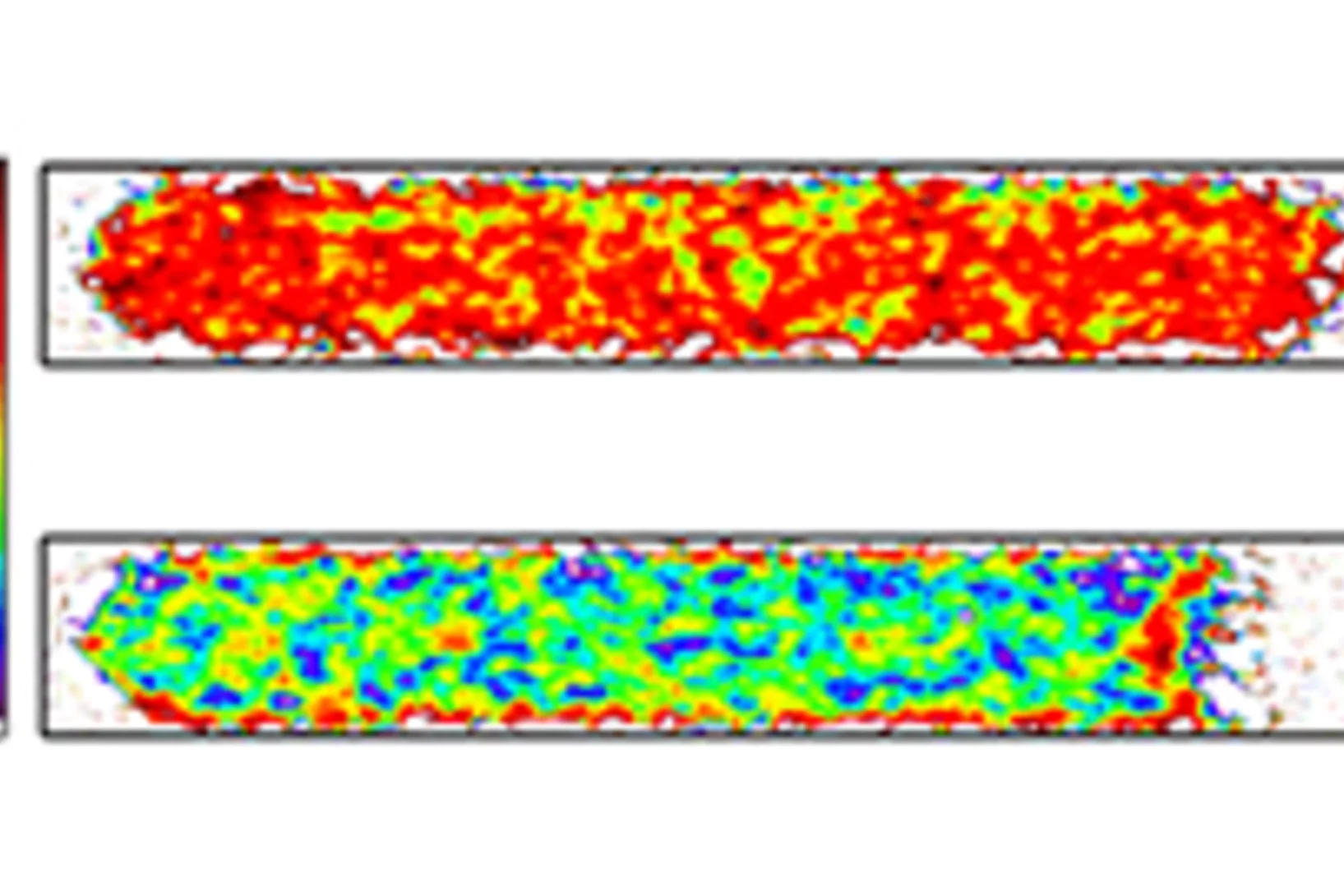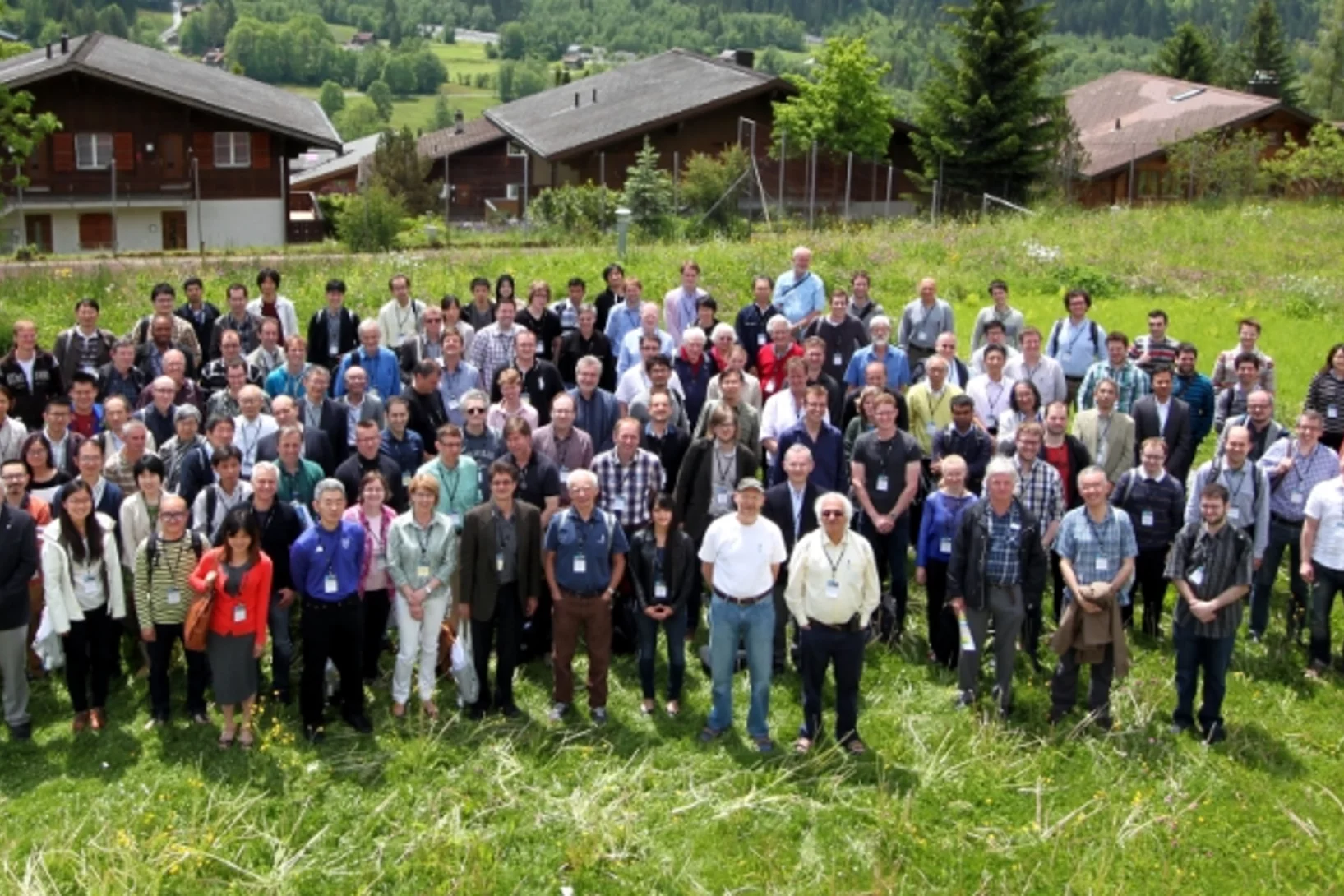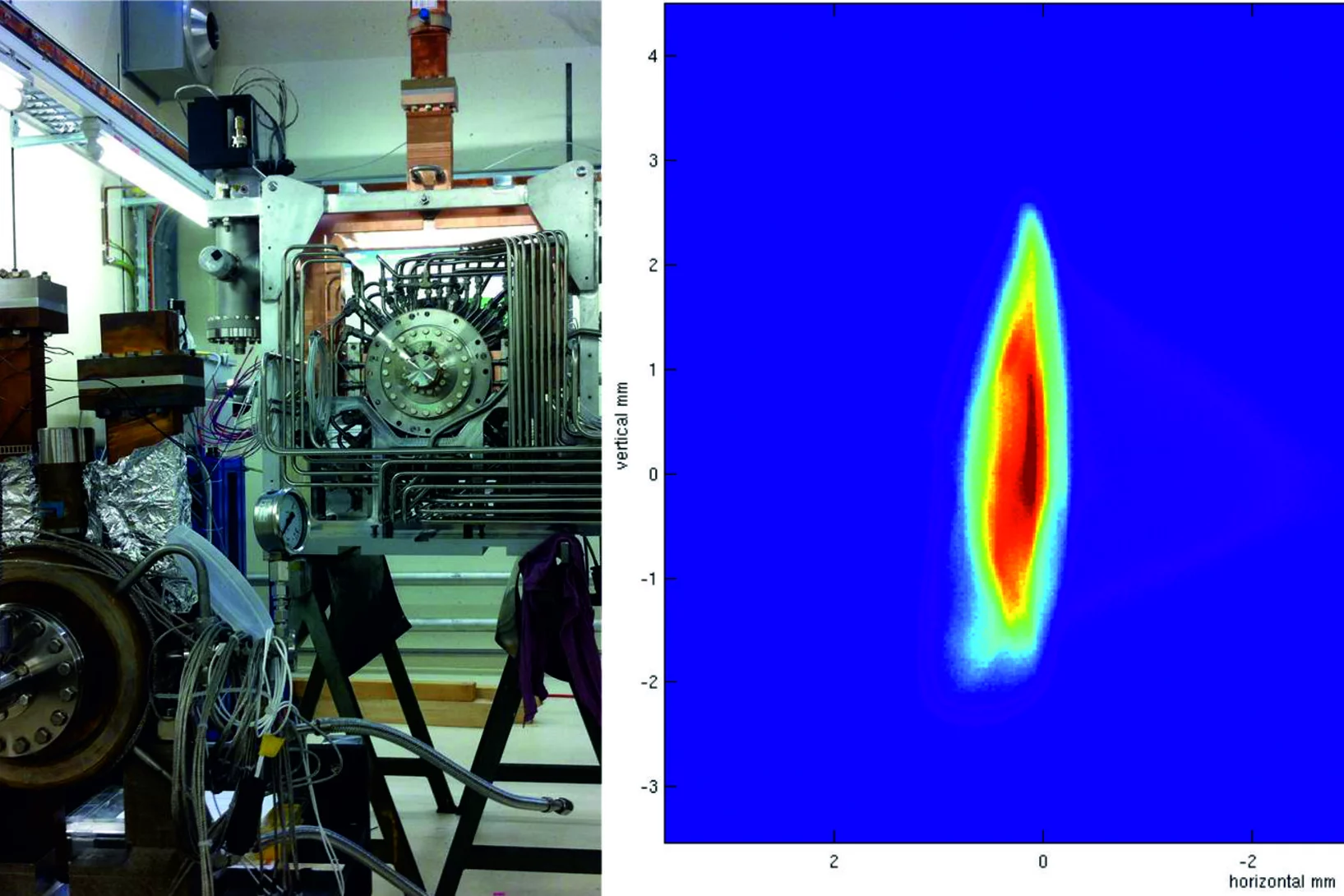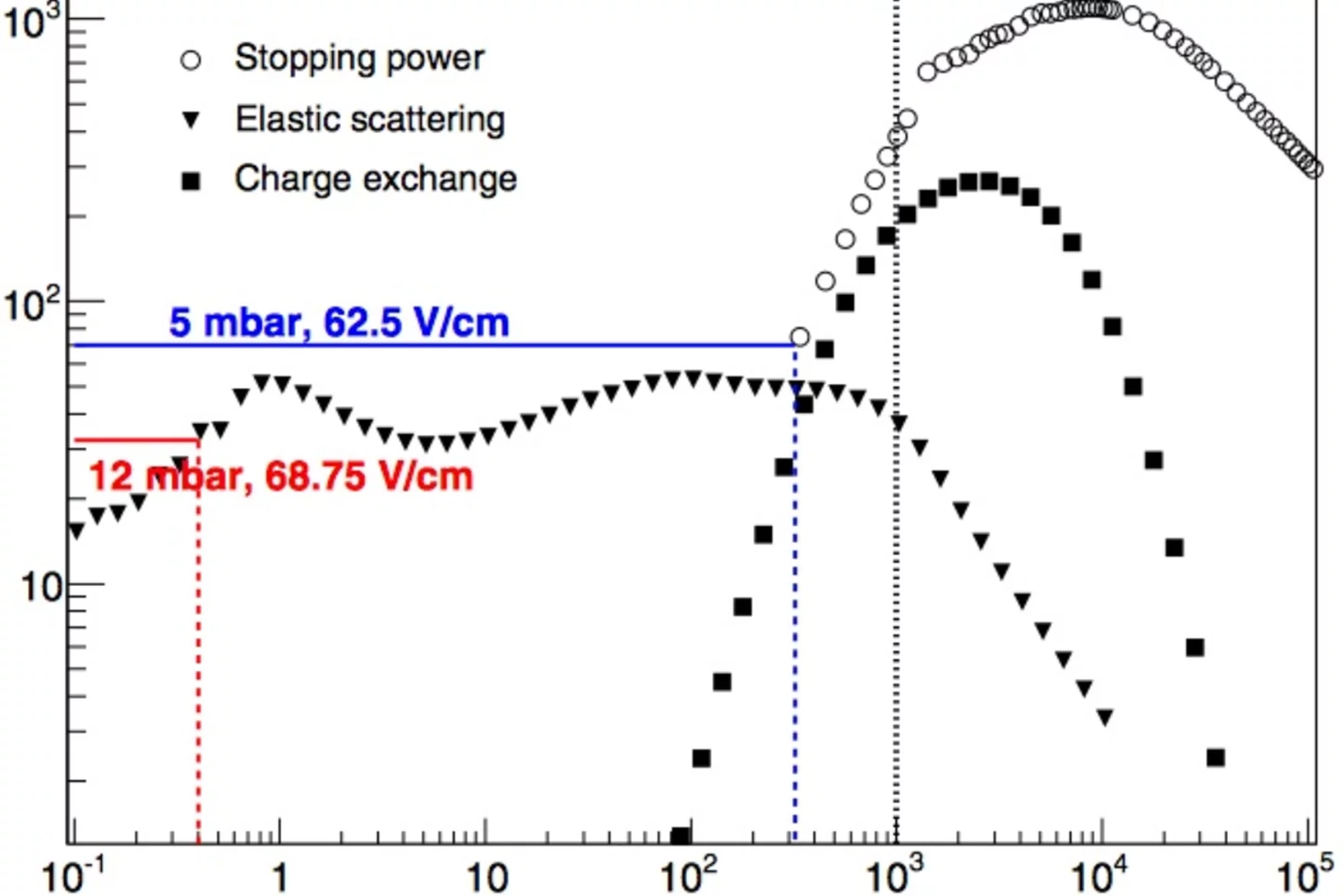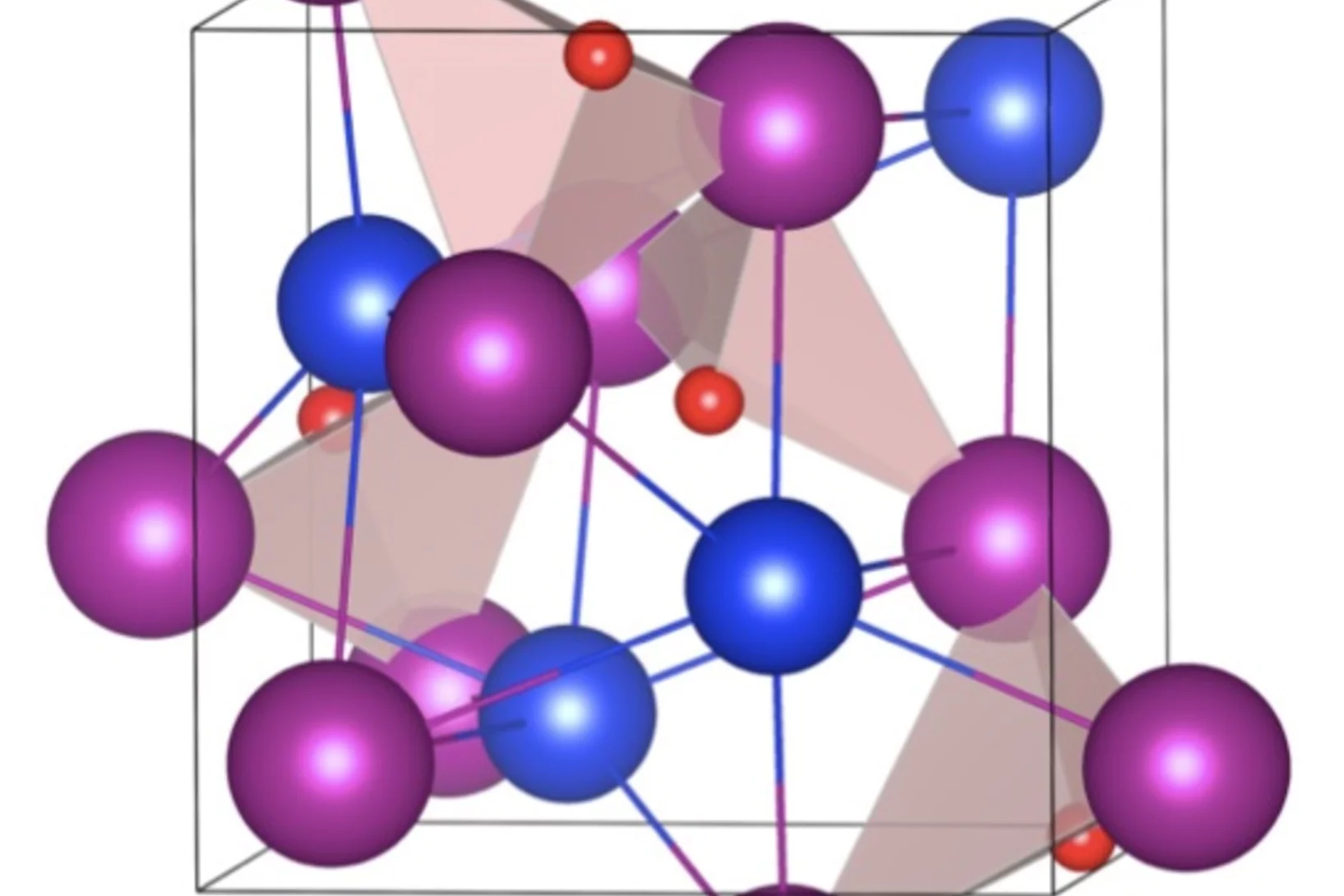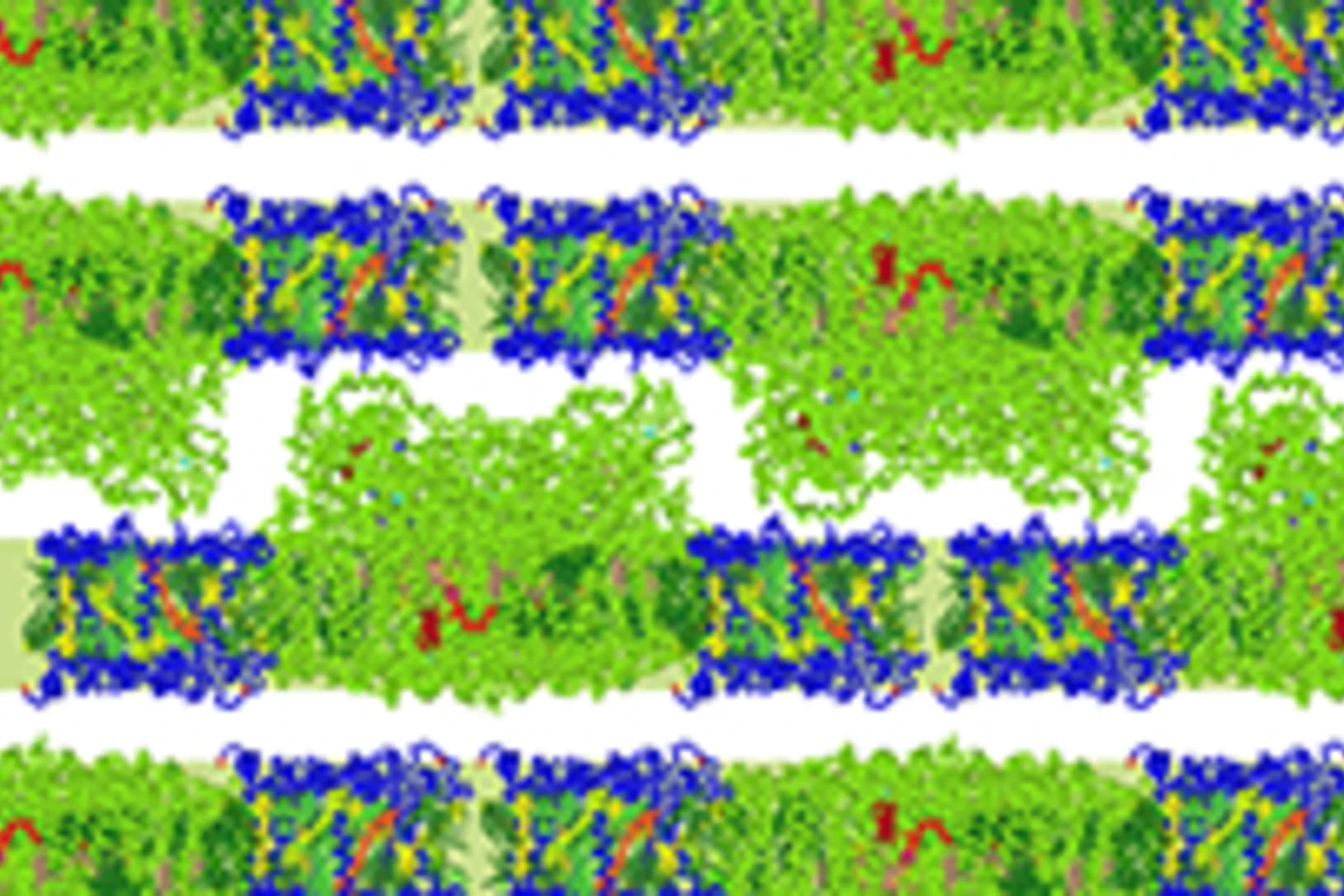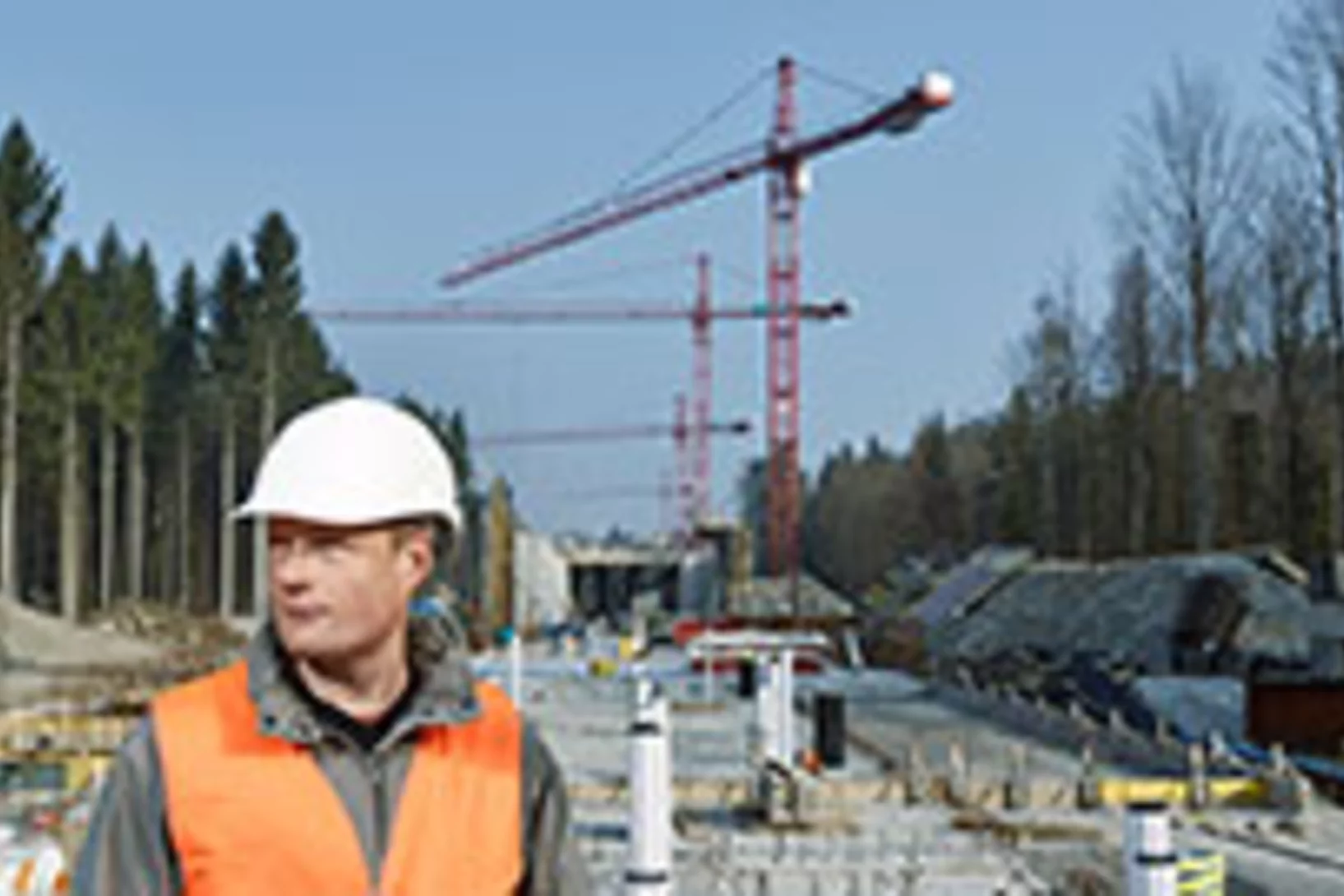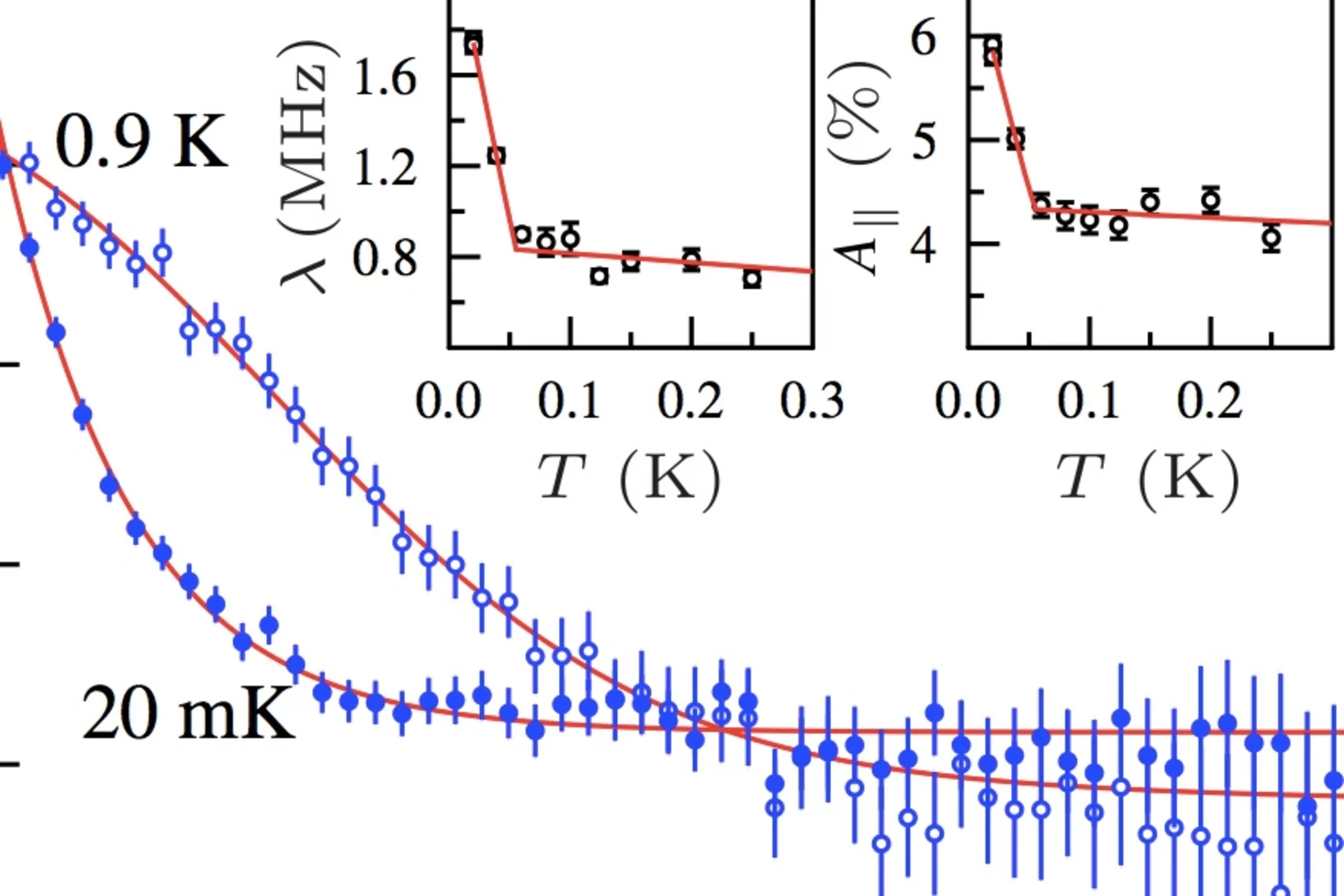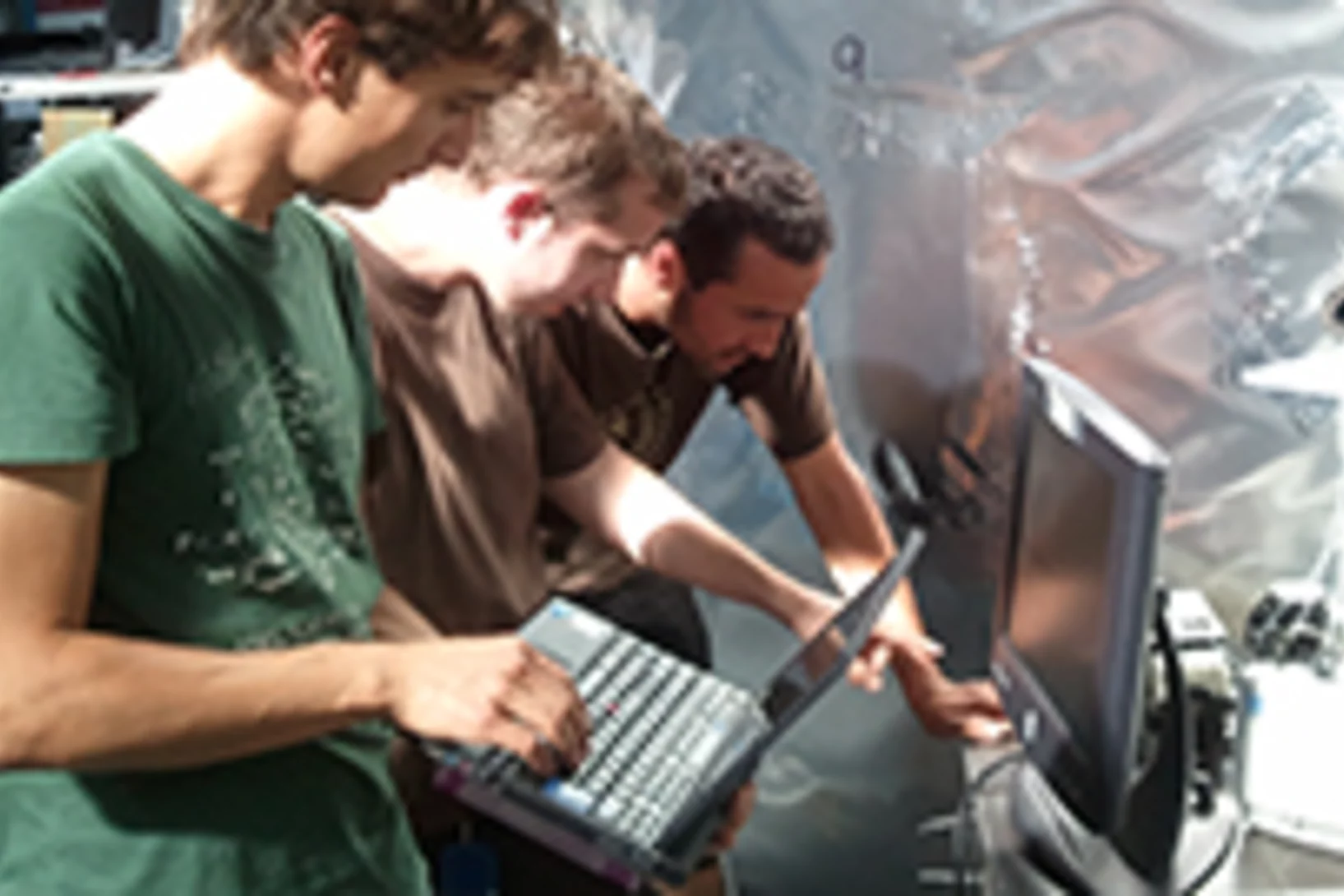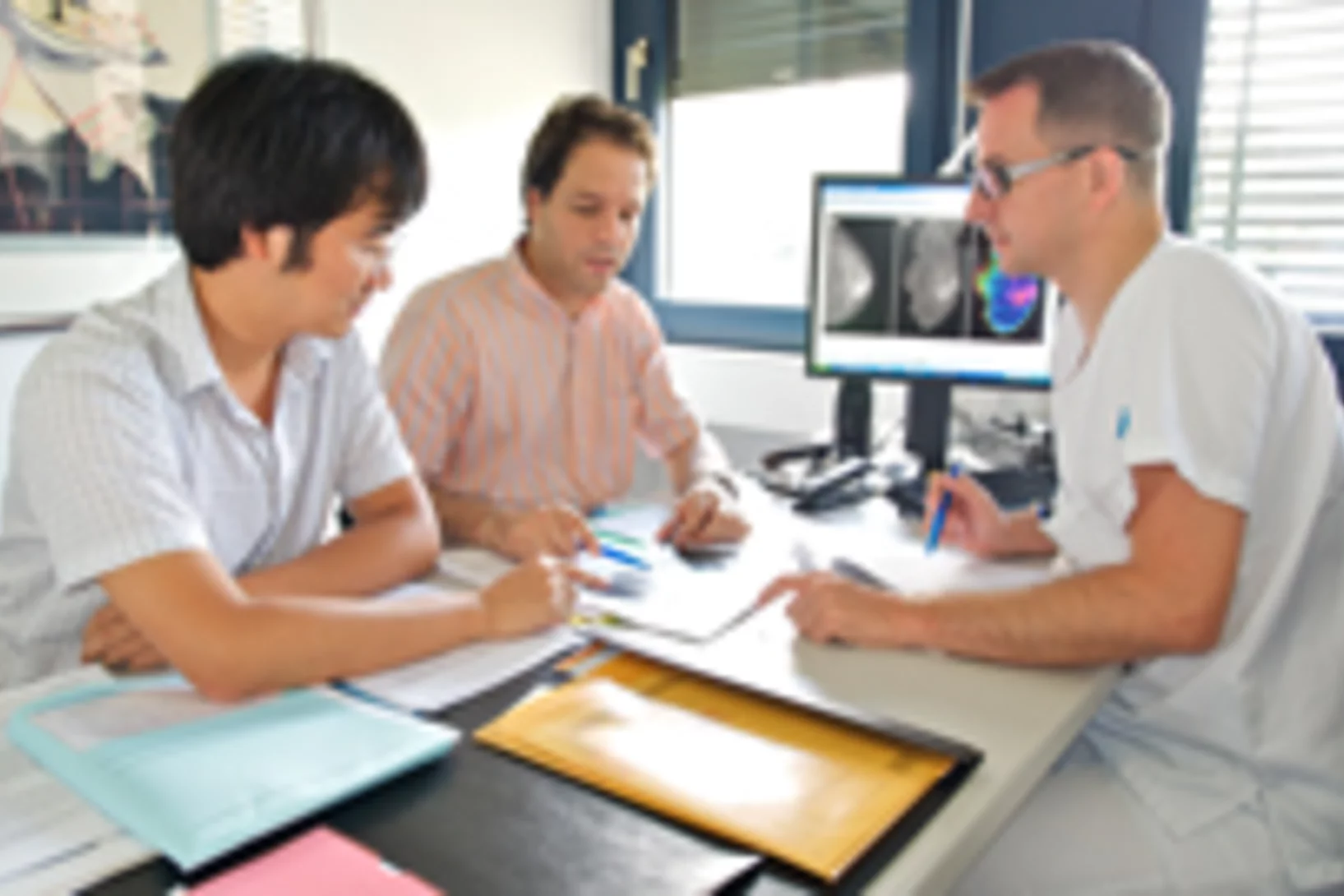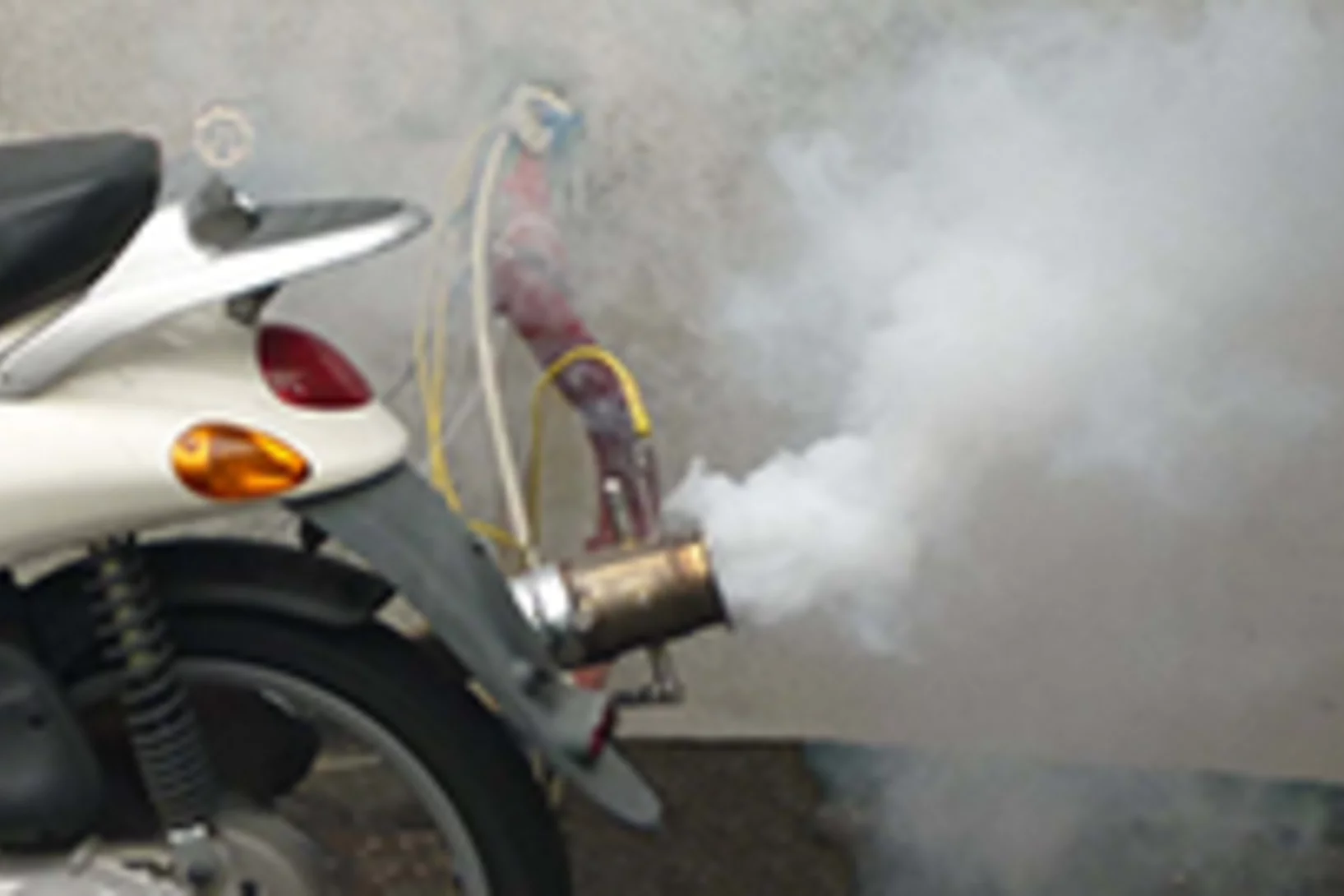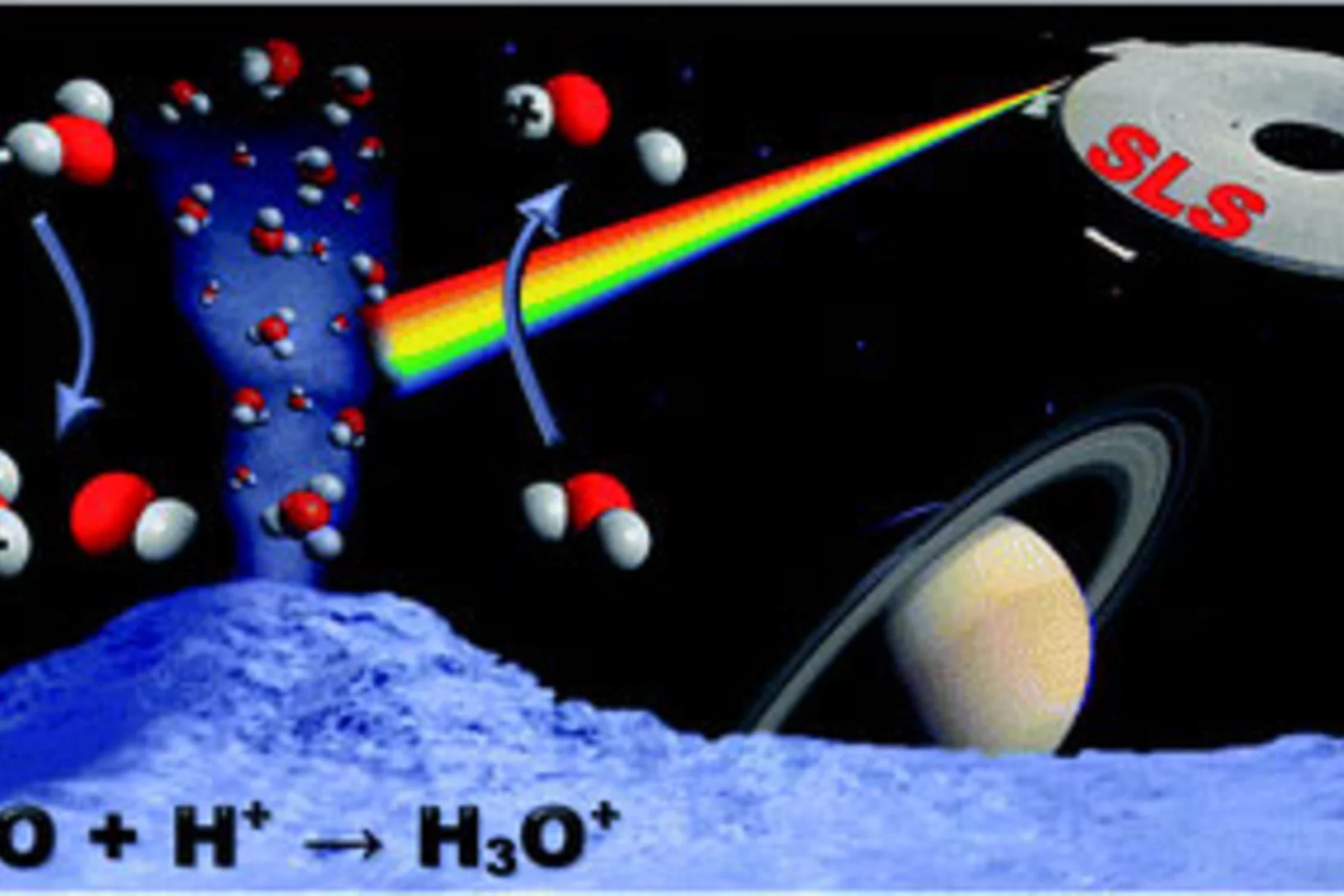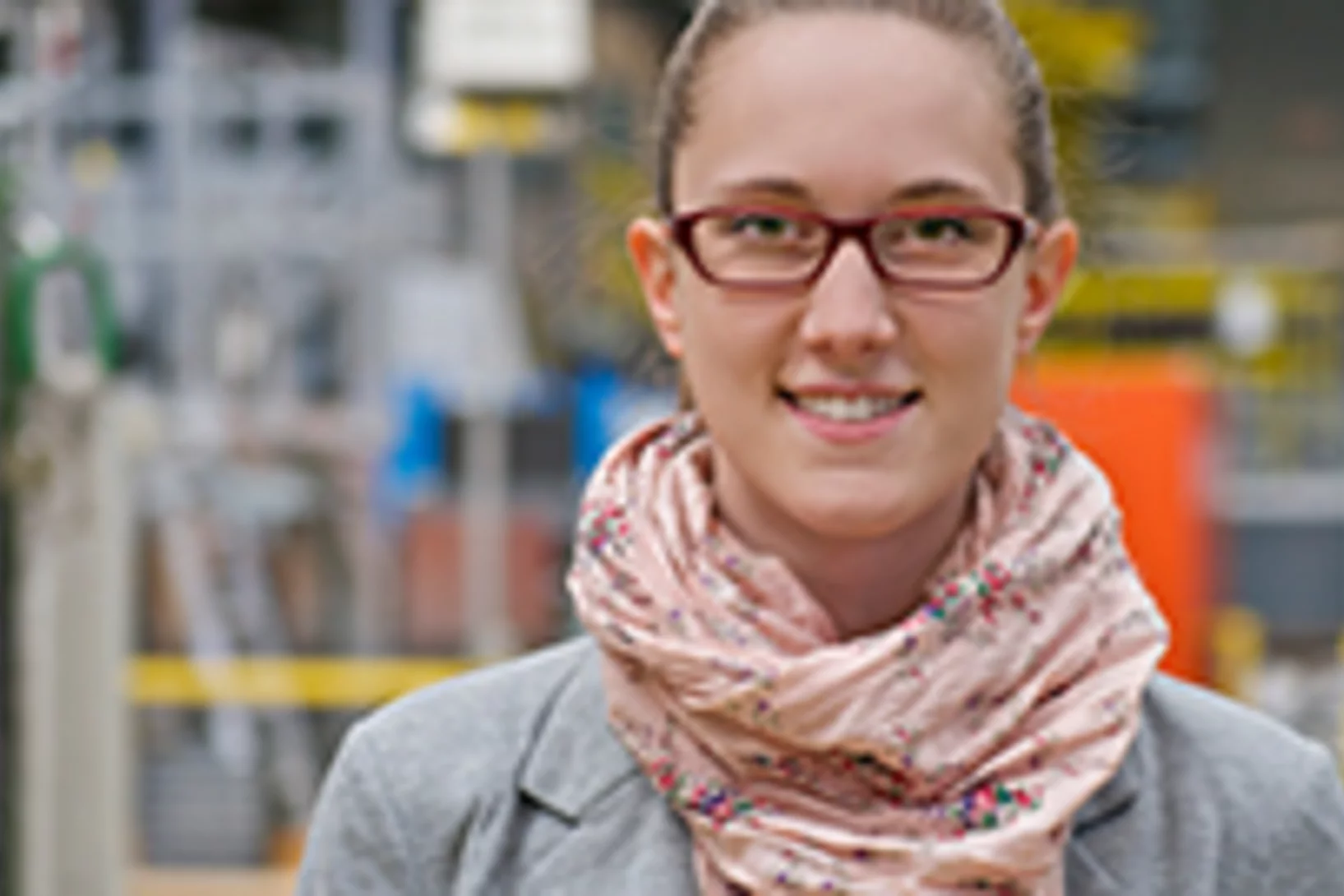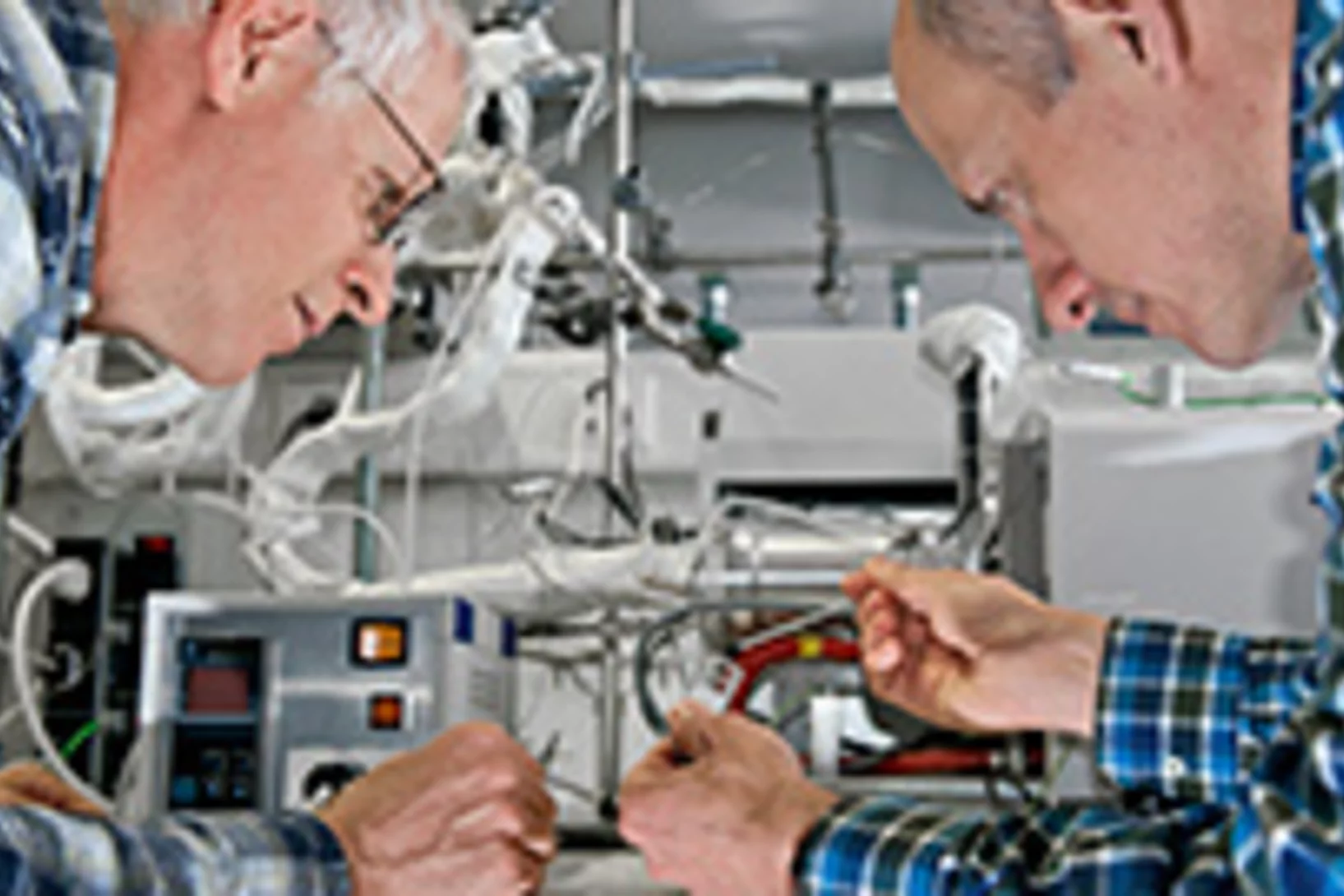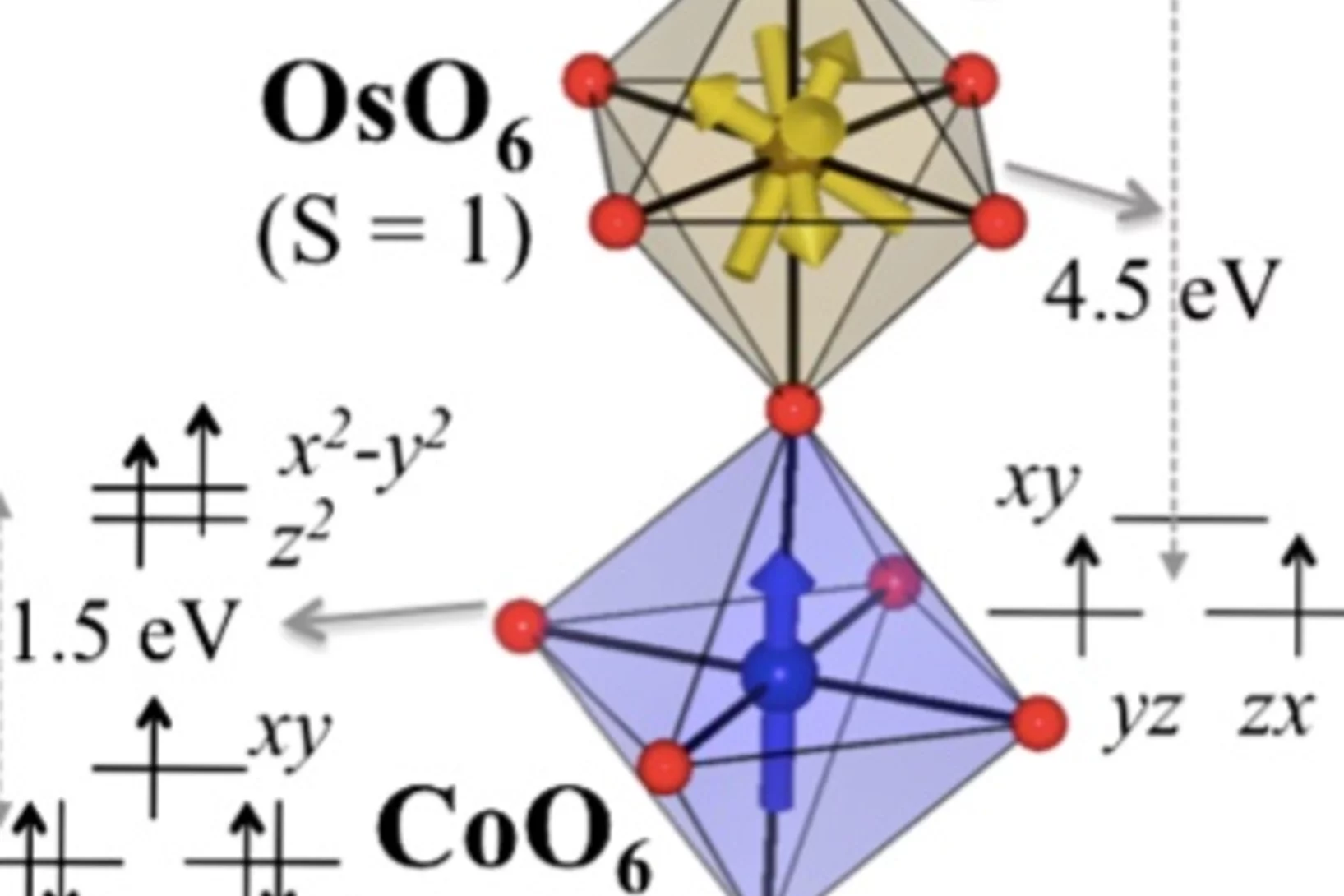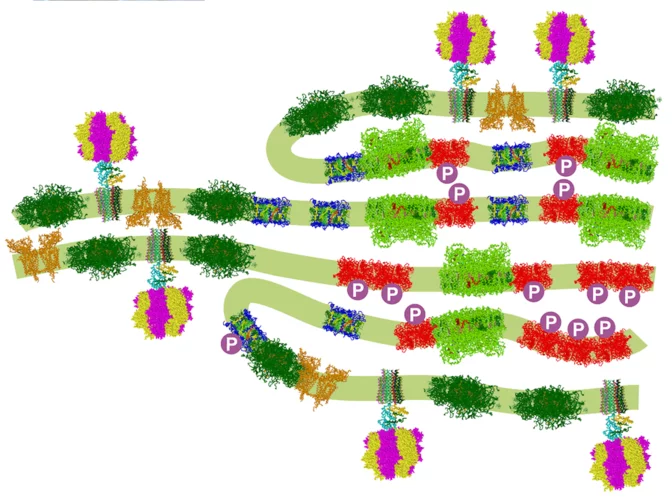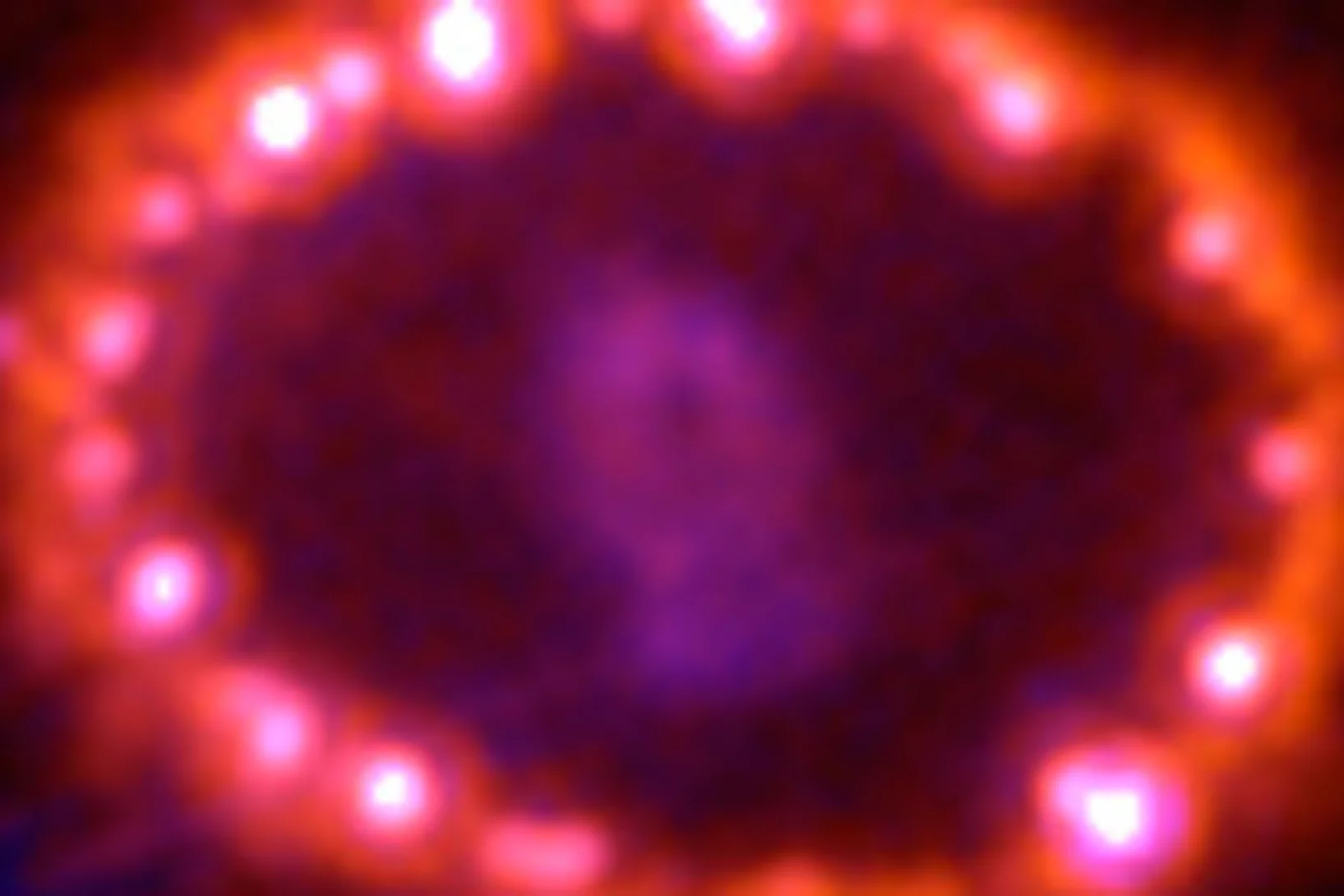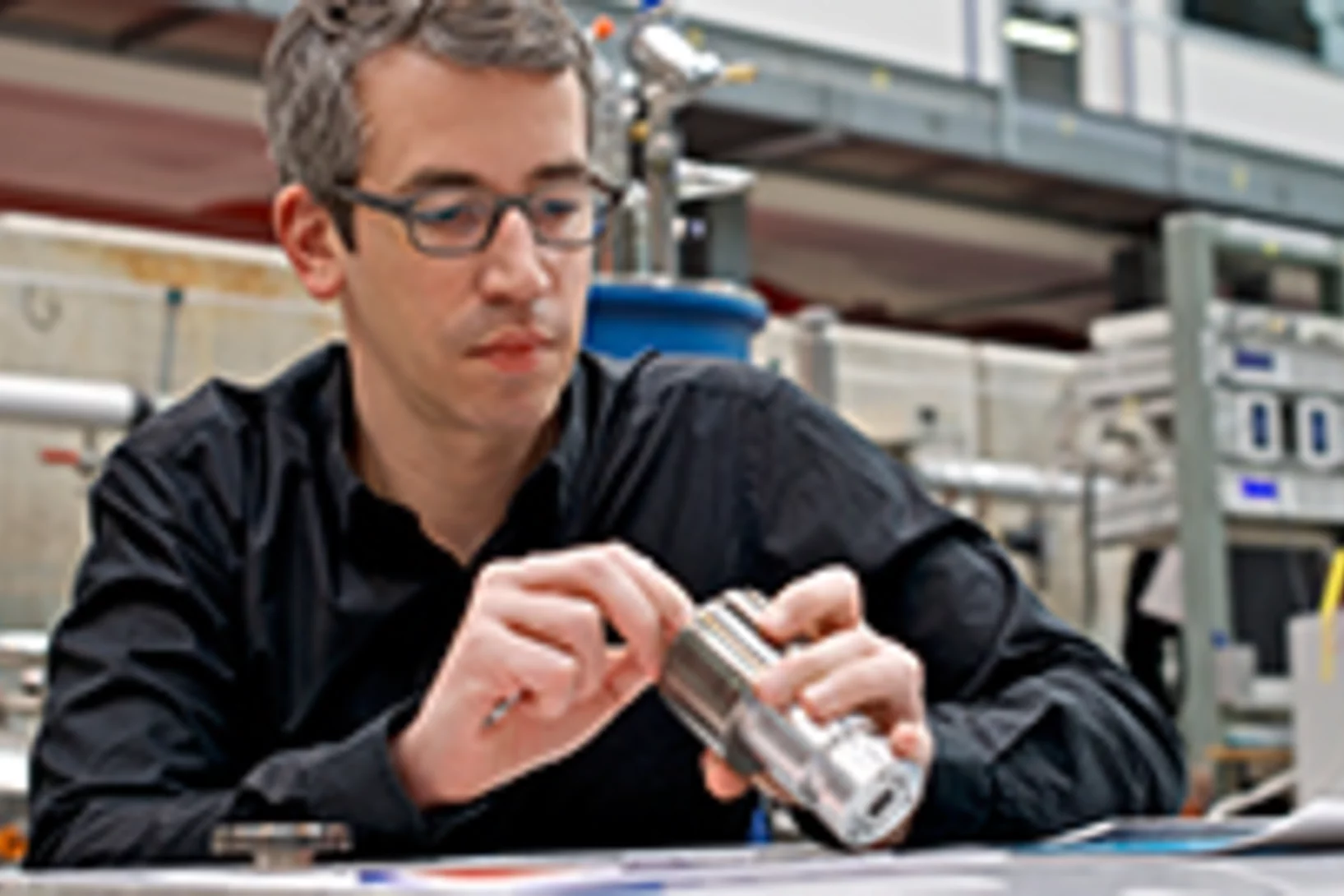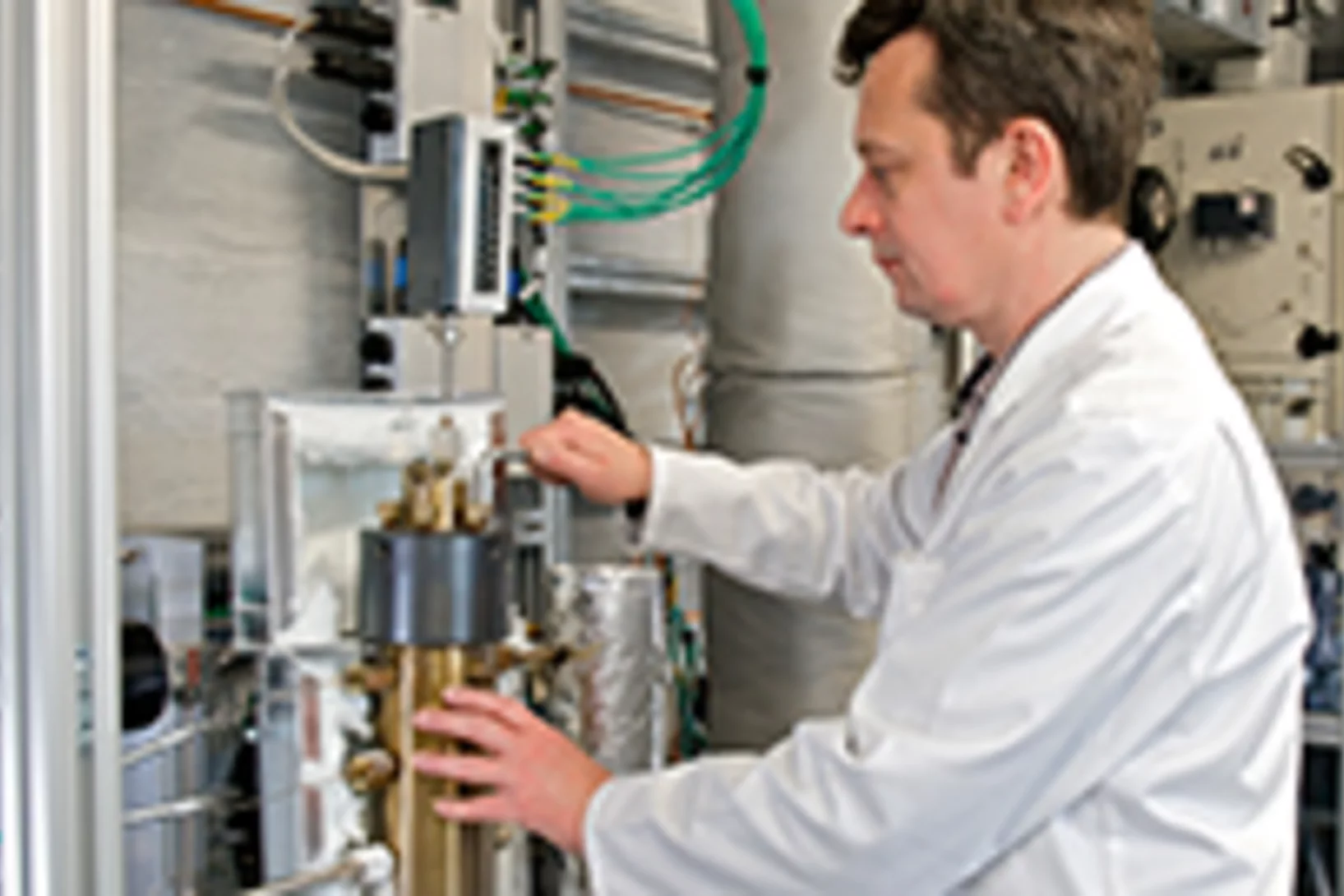Abandon de l’énergie nucléaire, développement de l’énergie solaire et éolienne, production d’énergie à partir de la biomasse, réduction de la consommation d’énergie. D’ici 2050, la Suisse doit atteindre la neutralité climatique. Un objectif ambitieux, rendu plus urgent que jamais par une situation géopolitique de plus en plus difficile. Comment faire pour mettre en place ces prochaines années un approvisionnement énergétique durable et résistant pour la Suisse? Comment les énergies renouvelables peuvent-elles être utilisées de manière optimale? Quelles sont les nouvelles technologies les plus prometteuses? Au PSI, des chercheurs s’efforcent de trouver des réponses à ces questions décisives.
Polychlorinated biphenyls in glaciers
We present a highly time-resolved historical record of polychlorinated biphenyls (PCBs) from an Alpine ice core (Fiescherhorn glacier, Switzerland). Introduced in the 1940s, PCBs were widely used industrial chemicals. Because of their persistence they are still found in the environment, long after their production phase-out. The Fiescherhorn ice core record covers the entire time period of industrial use of PCBs, that is, 1940?2002. The total concentration of six PCBs varies from 0.5 to 5 ng/L and reveals a temporal trend, with an 8-fold increase from the early 1940s to the peak value in the 1970s.
Coherent structural dynamics of a prototypical Charge-Density-Wave-to-Metal transition
In so called charge-density-wave compounds, the peculiar shape of the Fermi surface as well as electron-phonon coupling lead to a low-temperature broken symmetry ground state. This state is characterized by a modulation of the charge density (hence the name) and, via electron-phonon coupling, a distortion of the equilibrium lattice positions.
Origin of Anomalous Slip in Tungsten
Low-temperature deformation of body-centered cubic metals shows a significant amount of plastic slip on planes with low shear stresses, a phenomenon called anomalous slip. Despite progress in atomistic modeling of the consequences of complex stress states on dislocation mobility, the phenomenon of anomalous slip remained elusive. Using in situ Laue microdiffraction and discrete dislocation dynamics in micrometer sized tungsten single crystals, we demonstrate the occurrence of significant anomalous slip. It occurs as a consequence of cross kinks, topological configurations generated by prior dislocation interactions.
Un mystère illuminé par un « état sombre »
Le carbone diatomique (C2) est une molécule présente dans toutes les flammes où se consume un combustible contenant du carbone. Identifiable dans la lumière visible, le C2 est à l’origine de la couleur bleue au cur des flammes de bougie, et pourrait jouer un rôle important dans la formation de la suie. A présent et pour la première fois, des scientifiques de l’Institut Paul Scherrer ont réussi à rendre visible un état énergétique du C2, resté invisible jusqu’à ce jour. Leur découverte ne revêt pas seulement un intérêt pour les chercheurs qui travaillent dans le domaine de la combustion, mais elle résout enfin une énigme centenaire concernant le spectre de cette molécule omniprésente.
Identification of transitions between liquid water and ice with dual spectrum neutron imaging
The ability to start up at sub-zero Celsius temperatures is a prerequisite for the use of fuel cells in automotive applications, but specific measures need to be taken to prevent the product water to freeze and block the gas supply pathways. In this context, a method for imaging the distribution of liquid water and ice from neutron imaging experiments was developed.
Tag der offenen SwissFEL-Baustelle
Vergangenen Sonntag luden das Paul Scherrer Institut PSI und die Arbeitsgemeinschaft EquiFEL Suisse die Einwohnerinnen und Einwohner der Umgebung zum Tag der offenen SwissFEL-Baustelle ein. Rund 600 Interessierte informierten sich an mehreren Stationen über den aktuellen Bau- und Projektstand.Cette actualité n'existe qu'en allemand.
Première: visualiser la glace dans les piles à combustible
A l’aide d’une méthode novatrice, des chercheurs de l’Institut Paul Scherrer (PSI) ont réussi une première : visualiser directement la répartition de la glace et de l’eau liquide dans une pile à combustible à hydrogène. Pour distinguer de manière très fiable les zones où se trouve de l’eau liquide de celles où se trouve de la glace, cette nouvelle technique d’imagerie utilise successivement deux faisceaux de neutrons, dotés chacun d’une énergie différente. La méthode ouvre ainsi une perspective : la possibilité d’analyser l’un des principaux problèmes lié à l’utilisation de piles à combustible pour la propulsion de véhicules. La glace peut en effet boucher les pores dans les piles, et ainsi entraver leur fonctionnement. Les scientifiques du PSI ont publié leurs résultats le 16 juin 2014, dans la revue «Physical Review Letters».
13th International Conference on Muon Spin Rotation, Relaxation and Resonance (μSR2014)
The 13th International Conference on Muon Spin Rotation Relaxation and Resonance (μSR2014), organized by our Laboratory for Muon Spin Spectroscopy in collaboration with the University of Zürich and the University of Fribourg, closed on June 6th in Grindelwald.
16 nanomètres en 3D
Des chercheurs de l’Institut Paul Scherrer (PSI) ont développé un procédé qui permet à l’imagerie tomographique d’accéder à de nouveaux ordres de grandeur. Il sera ainsi possible à l’avenir de générer, par exemple, des images plus détaillées de tissu biologique. A l’aide d’un dispositif de mesure spécialement conçu à cet effet et installé à la Source de Lumière Suisse (SLS), les chercheurs ont réussi à obtenir une résolution de 16 nanomètres avec un échantillon de grande taille, et ont réalisé un record du monde par la même occasion.
First beam from the SwissFEL electron gun
The new 3 GHz photocathode gun will provide the electron bunches for SwissFEL and has recently been installed in the SwissFEL injector test facility. There, it replaced the CTF2-gun 5, borrowed from CERN. The new gun is capable now of operation with 100Hz repetition frequency and a higher field on cathode and improved field symmetry. After RF conditioning of about 4 days, the gun reached the nominal acceleration gradient of 100 MV/m at an input power of about 17 MW and pulse-width of 1 microsecond.
Muon Cooling: Longitudinal Compression
A 10 MeV/c positive muon beam was stopped in helium gas of a few mbar in a magnetic field of 5T. The muon 'swarm' has been efficiently compressed from a length of 16cm down to a few mm along the magnetic field axis (longitudinal compression) using electrostatic fields. The simulation reproduces the low energy interactions of slow muons in helium gas. Phase space compression occurs on the order of microseconds, compatible with the muon lifetime of 2μs. This paves the way for the preparation of a high- quality low-energy muon beam, with an increase in phase space density relative to a standard surface muon beam of 107. The achievable phase space compression by using only the longitudinal stage presented here is of the order of 104.
Le bricoleur de feu d'artifices devenu chercheur spécialiste des accumulateurs
Portrait de PAtrick Lanz, doctorant au PSI
Patrick Lenz a découvert sa fascination pour l’univers de la science et de la technique alors qu’il était encore écolier. Son père était électrotechnicien et possédait donc à la maison un assortiment bien fourni de composants électroniques. Mais le jeune Patrick ne se contentait pas de jouer avec ses voitures télécommandées, il démontait systématiquement ses jouets, à la recherche d’explications pour comprendre leur mode de fonctionnement. Plus tard, Patrick Lenz s’est mis aussi à démonter de petites piles, parce qu’il voulait comprendre « ce qui se passait à l’intérieur ». Il a peut-être accompli à cette époque le premier pas vers son travail actuel : chercheur spécialiste des accumulateurs.
Une polymécanicienne toujours en mouvement
Rebekka Liefert termine cette année ses quatre ans d’apprentissage de polymécanicienne. Elle a été particulièrement séduite par le fait qu’au PSI, on ne construit pratiquement que des prototypes. Car les composants pour les installations de recherche sont dans la plupart des cas des pièces uniques. La fabrication en série ne serait pas vraiment sa tasse de thé, reconnaît Rebekka Liefert : elle a trop tendance à vite s’ennuyer. Je suis incapable de rester assise dans un coin, avoue-t-elle en riant. L’alternance qui règne ici me convient donc parfaitement.
Understanding the μSR spectra of MnSi without magnetic polarons
Transverse-field muon-spin rotation (μSR) experiments were performed on a single crystal sample of the noncentrosymmetric system MnSi. The observed angular dependence of the muon precession frequencies matches perfectly the one of the Mn-dipolar fields acting on the muons stopping at a 4a position of the crystallographic structure. The data provide a precise determination of the magnetic dipolar tensor. In addition, we have calculated the shape of the field distribution expected below the magnetic transition temperature TC at the 4a muon site when no external magnetic field is applied.
Nouvelle éclairage sur le processus de photosynthèse
La manière dont les algues et les plantes répondent à la lumière a été réinterprétée sur la base des résultats d'expériences qui ont étudié les changements structuraux en temps réel dans les algues vertes. Dans des conditions de lumière particulières au cours de la photosynthèse, l'empilement et l'alignement bien ordonnés des membranes photosensibles dans les algues sont perturbés. Les protéines enfouies dans la membrane qui captent la lumière deviennent plutôt quasiment inactives, il n’y a aucun déplacement significatif. Jusqu’à présent on considérait en effet que les protéines qui captent la lumière se déplaçaient autour des membranes.
Un grand ouvrage au millimètre près
Pour que les électrons puissent atteindre l’énergie nécessaire, leur trajectoire dans l’accélérateur linéaire doit être absolument rectiligne. La plus petite courbure est synonyme d’une perte de qualité du faisceau d’electrons, que l’accélérateur linéaire SwissFEL, relativement court, ne peut pas se permettre. Lors de la construction du bâtiment, même la courbure de la Terre doit donc être compensée.
Controlling Magnetic Order and Quantum Disorder in Molecule-Based Magnets
We investigate the structural and magnetic properties of two molecule-based magnets synthesized from the same starting components. Their different structural motifs promote contrasting exchange pathways and consequently lead to markedly different magnetic ground states. Through examination of their structural and magnetic properties we show that [Cu(pyz)(H2O)(gly)2](ClO4)2 may be considered a quasi-one- dimensional quantum Heisenberg antiferromagnet whereas the related compound [Cu(pyz)(gly)](ClO4), which is formed from dimers of antiferromagnetically interacting Cu2+ spins, remains disordered down to at least 0.03 K in zero field but shows a field-temperature phase diagram reminiscent of that seen in materials showing a Bose-Einstein condensation of magnons.
Le rôle des ingrédients forestiers dans la formation des nuages
Les scientifiques savent qu’en termes de bilan, les nuages contribuent au refroidissement du climat de notre planète. Mais ils ne connaissent pas l’étendue précise de cet effet.Une nouvelle étude de l’expérience CLOUD (Cosmics Leaving OUtdoor Droplets) au CERN fait à présent la lumière sur la toute première étape du processus de formation des nuages. Ce travail représente donc une importante contribution à une meilleure compréhension du lien entre nuages et climat. L’étude, menée sous la direction de chercheurs de l’Institut Paul Scherrer, paraît le 16 mai 2014 dans le magazine scientifique « Science ».
Le contraste de phase améliore la mammographie
Grâce à l'imagerie par contraste de phase, des chercheurs de l’EPF Zurich, de l’Institut Paul Scherrer (PSI) et de l’hôpital cantonal de Baden ont réussi à obtenir des mammographies, grâce auxquelles il est possible de procéder à une évaluation plus précise des cancers et des précancers du sein. Ce procédé pourrait contribuer à une utilisation plus ciblée des biopsies, et à l’amélioration des examens de suivi.
Des deux-roues très polluants
Dans certaines villes, la pollution de l’air est due davantage aux petits cyclomoteurs qu’aux voituresDans de nombreuses villes d’Asie, d’Afrique et du Sud de l’Europe, ce ne sont pas les voitures ou les camions, qui représentent la source la plus importante de poussière fine et d’autres polluants atmosphériques, mais les cyclomoteurs à 2 temps. C’est ce que montre l’étude d’une équipe internationale de chercheurs, menée par des scientifiques de l’Institut Paul Scherrer (PSI). Ces émissions élevées sont dues aux caractéristiques de la combustion dans les moteurs à 2 temps, d’autant plus que ces deux-roues sont soumis à des normes d’émissions encore trop peu sévères. Les résultats de l’étude sont publiés le 13.05.2014 dans la revue scientifique Nature Communications.
On the protonation of water
Imaging photoelectron photoion coincidence (iPEPICO) spectroscopy on isolated water molecules and water dimers establishes a new route to determining the water proton affinity (PA) with unprecedented accuracy. A floating thermochemical cycle constructed from the OH+ and H3O+ appearance energies and three other spectroscopic values establishes the water PA as 683.22 ± 0.25 kJ mol−1 at 0 K, which converts to 688.81 ± 0.25 kJ mol−1 at room temperature.
Ce sera quel composé aromatique, aujourd’hui?
La décomposition thermique est un procédé qui permet d’obtenir une sorte de la bio-huile à partir de la lignine, l’un des principaux composants des végétaux. Cette huile pourrait servir de carburant, si elle n’était pas aussi corrosive, et donc aussi difficile à stocker et à transporter. En la purifiant de l’oxygène responsable de l’effet corrosif, il serait possible d’obtenir de précieuses substances organiques, appelées composés aromatiques. A l’aide d’une large palette de catalyseurs, des chercheurs du PSI ont étudié la possibilité de produire ces composés aromatiques directement à partir de la lignine, de manière ciblée.
Deux en un : filtre à particules diesel et catalyseur de la réduction des oxydes d’azote
Filtrer la suie et réduire les oxydes d’azote au même endroit : cela fait quelques années que des ingénieurs travaillent à la combinaison de ces deux missions essentielles du traitement des gaz d’échappement dans les véhicules. Des chercheurs de l’Institut Paul Scherrer montrent que le projet n’est pas irréaliste. La suie, en tout cas, ne devrait pas faire obstacle à sa réalisation
Lattice-Site-Specific Spin Dynamics in Double Perovskite Sr2CoOsO6
Magnetic properties and spin dynamics have been studied for the structurally ordered double perovskite Sr2CoOsO6. Neutron diffraction, muon-spin relaxation, and ac-susceptibility measurements reveal two antiferromagnetic (AFM) phases on cooling from room temperature down to 2 K. In the first AFM phase, with transition temperature TN1=108K, cobalt (3d7, S=3/2) and osmium (5d2, S=1) moments fluctuate dynamically, while their average effective moments undergo long-range order. In the second AFM phase below TN2=67K, cobalt moments first become frozen and induce a noncollinear spin-canted AFM state, while dynamically fluctuating osmium moments are later frozen into a randomly canted state at T≈5K.
Chloroplast remodeling during state transitions in green algae
In oxygenic photosynthesis photochemical reactions occur in two different photosystems (PSs) and the light-energy conversion is regulated by balancing their activity. Such a power balance requires a sophisticated regulatory mechanism called state transitions, which involve reversible phosphorylation of the light-harvesting complex proteins (LHCIIs) to redistribute absorbed excitation energy between the two photosystems.
De la matière stellaire produite à l’Institut Paul Scherrer
Des isotopes produits au PSI permettent de reproduire des processus qui se jouent au cur des étoilesLes installations de recherche de l’Institut Paul Scherrer produisent des isotopes, qui n’existent, sinon, que dans les supernovae, c’est-à-dire dans des étoiles en train d’exploser. Cela permet de reproduire en laboratoire certains processus propres aux supernovae. Ainsi, une équipe internationale de chercheurs s’est servie d’un isotope de titane, Ti 44, pour étudier un processus de ce genre au CERN, à Genève. Il est alors apparu que ce processus est moins efficace qu’on ne l’assumait jusqu’ici. Il faudra donc corriger les calculs théoriques actuels des processus qui se déroulent dans les supernovae.
Quantum and classical criticality in a dimerised quantum antiferromagnet
A quantum critical point (QCP) is a singularity in the phase diagram arising due to quantum mechanical fluctuations. The exotic properties of some of the most enigmatic physical systems, including unconventional metals and superconductors, quantum magnets, and ultracold atomic condensates, have been related to the importance of the critical quantum and thermal fluctuations near such a point.
Fonte Quantique
Des passages à l'état d'agrégats déclenchés par les effets quantiques à en physique on parle de transitions de phases quantiques à jouent un rôle dans de nombreux phénomènes étonnants dans les corps solides, comme la supraconductivité à haute température. Des chercheurs de Suisse, du Royaume-Uni, de France et de Chine ont modifié de manière ciblée les fluctuations quantiques dans la structure magnétique du matériau TlCuCl3 en l'exposant à la pression externe et en faisant varier cette pression. A l'aide des neutrons, ils ont pu observer ce qui se passe dans une transition de phase quantique au cours de laquelle la structure magnétique fond de manière quantique.
Le savoir-faire en piles à combustible de l’Institut Paul Scherrer au cœur des nouveaux Minibars CFF
Le 4 avril 2014, les CFF lancent un nouveau modèle de Minibar dans leurs trains Intercity. Il sera équipé d’un système de pile à combustible, au développement duquel l’Institut Paul Scherrer a contribué. Grâce à ce système et en dépit des contraintes d’espace, le Minibar dispose à présent de suffisamment d’énergie pour préparer aussi des capuccinos et des latte machiato.
Coup d’envoi pour l’exploitation énergétique de la biomasse humide
Le 28 mars 2014, une nouvelle installation d’essai sera inaugurée à l’Institut Paul Scherrer, pour l’étude de la production d’énergie à partir de la biomasse humide. Logée dans un container, cette installation devrait produire du biogaz synthétique à partir de lisier, de boues d’épuration ou d’algues.


